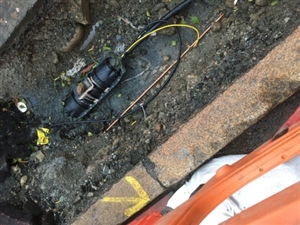
Kelly Marie Angel:
on its own it mite not be up to much but I bet in parallel with a few others its a respectably low value
That was my thought - isn't the idea of PME that loads of electrodes help to keep N at E potential?
It makes me wonder why the DNOs do not put in an earth rod (or tape or mat) every time that they make a junction. It would not cost much.

That was my thought - isn't the idea of PME that loads of electrodes help to keep N at E potential?

We're about to take you to the IET registration website. Don't worry though, you'll be sent straight back to the community after completing the registration.
Continue to the IET registration site